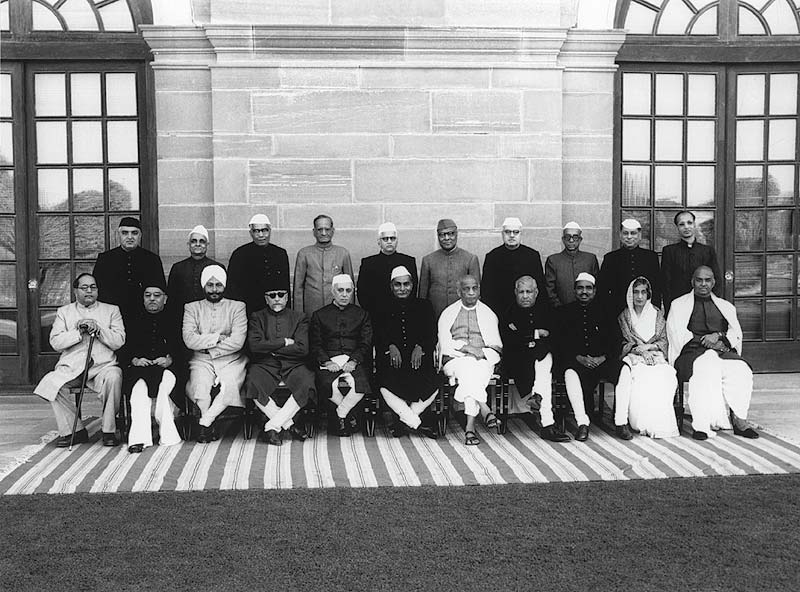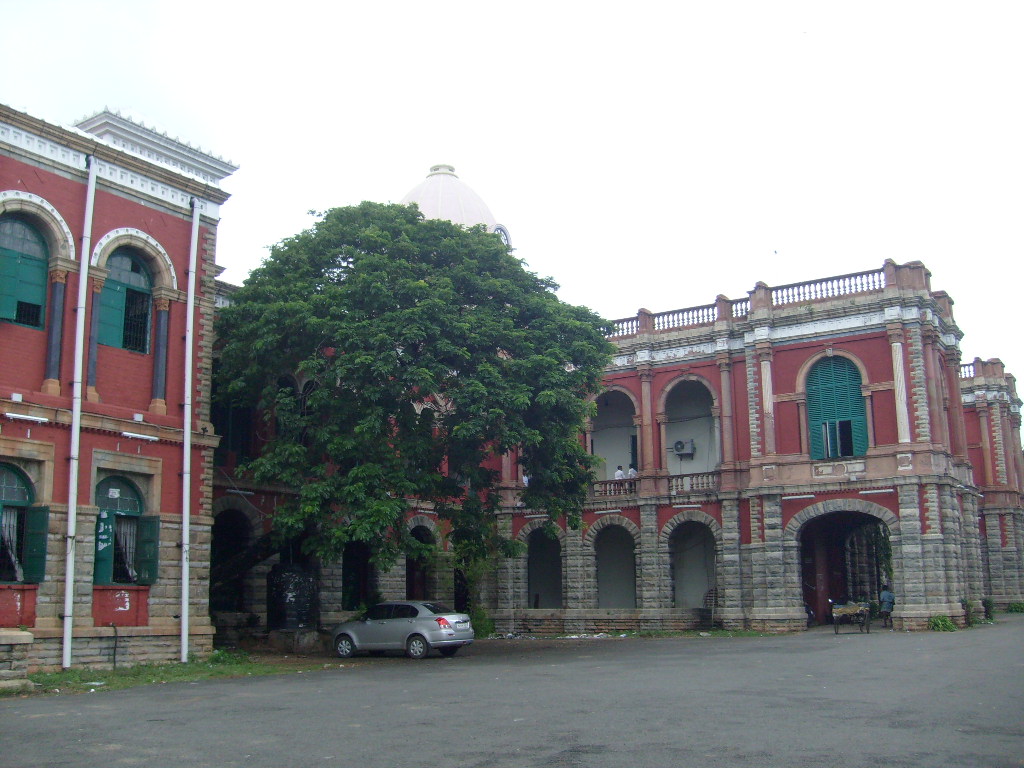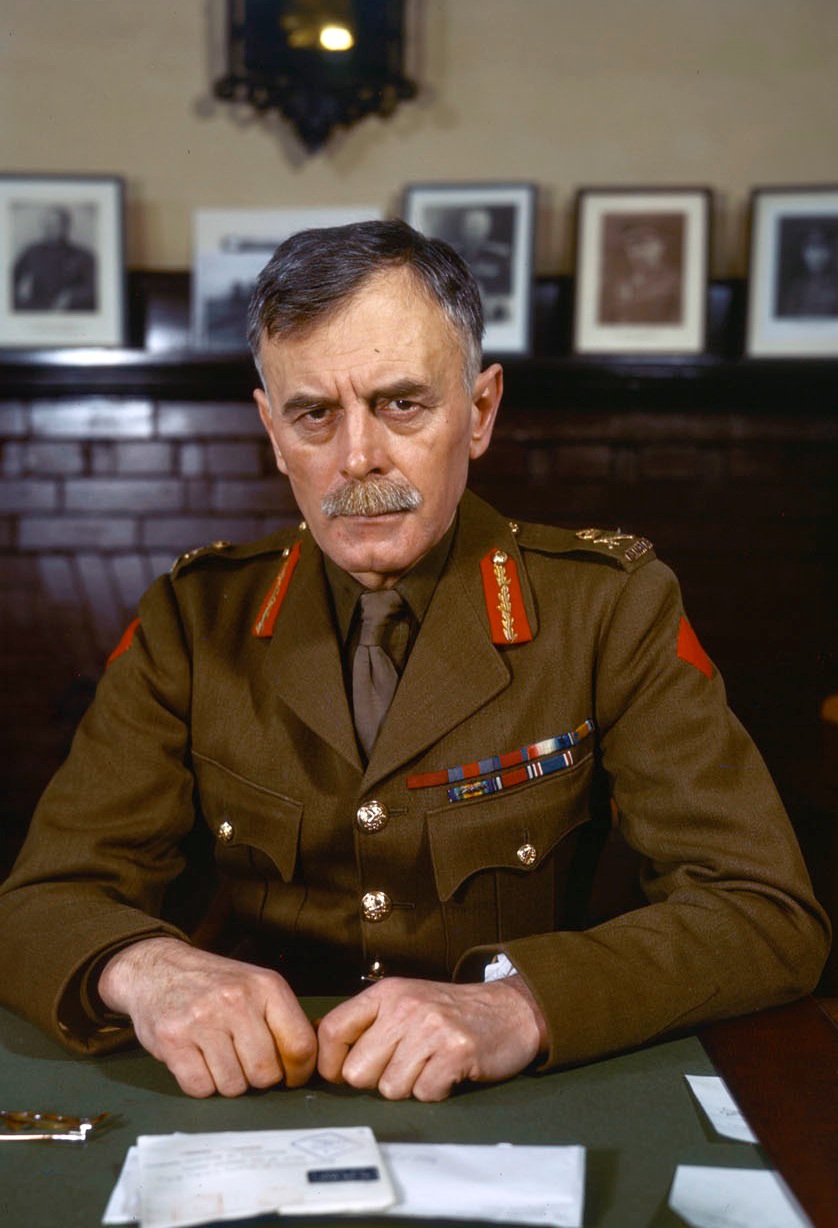|
N. Gopalaswami Ayyangar
Diwan Bahadur Sir Narasimha Gopalaswami Ayyangar (31 March 1882 – 10 February 1953) was an Indian civil servant and statesman, who served as the Prime Minister of the princely state of Jammu and Kashmir and later a minister in the first cabinet of independent India. He was a member of the drafting committee of the Constitution of India, the leader of the Rajya Sabha, a 'minister without portfolio' looking after Kashmir Affairs, and the Minister for Railways. In his Kashmir Affairs role, he represented India at the United Nations Security Council and later drafted the Article 370 of the Indian Constitution that granted autonomy to Jammu and Kashmir. Early life and education Gopalaswami Ayyangar was born on 31 March 1882 in Tanjore District Madras Presidency. He studied at the Wesley School, and at the Presidency and Law Colleges in Madras, whereafter, for a short period in 1904, he was an Assistant Professor in Pachaiyappa's College. Career In 1905, Ayyangar joine ... [...More Info...] [...Related Items...] OR: [Wikipedia] [Google] [Baidu] |
Dewan Bahadur
Dewan Bahadur or Diwan Bahadur was a title of honour awarded during British rule in India. It was awarded to individuals who had performed faithful service or acts of public welfare to the nation. From 1911 the title was accompanied by a special Title Badge. ''Dewan'' literally means Prime Minister in Indian context and '' Bahadur'' means brave. This title was above Rao Bahadur title and people with Rao Bahadur could be elevated to status of Diwan Bahadur. Further, the Prime Ministers of Indian Princely States were known as Dewan/ Diwan. They were also given or promoted directly to the title of Dewan Bahadur by British authorities on being appointed Dewan, to suit their post. The Dewan and other similar titles issued during British Raj were disestablished in 1947 upon independence of India. List of people with Dewan Bahadur title * R. Raghunatha Rao – Dewan of Indore State from 1875 to 1880 and 1886 to 1888. * R. Ramachandra Rao * N. Pattabhirama Rao * K. Rangachar ... [...More Info...] [...Related Items...] OR: [Wikipedia] [Google] [Baidu] |
Lal Bahadur Shastri
Lal Bahadur Shastri (; born Lal Bahadur Srivastava; 2 October 190411 January 1966) was an Indian politician and statesman who served as the Prime Minister of India, prime minister of India from 1964 to 1966. He previously served as Minister of Home Affairs (India), home minister from 1961 to 1963. Shastri was born to Sharad Prasad Srivastava and Ramdulari Devi in Mughalsarai (present-day Uttar Pradesh) on 2 October 1904. He studied in East Central Railway Inter college and Harish Chandra High School, which he left to join the Non-cooperation movement (1909–22), non-cooperation movement. He worked for the betterment of the Harijans at Muzaffarpur and dropped his caste-derived surname of "Srivastava". Shastri's thoughts were influenced by reading about Swami Vivekananda, Mahatma Gandhi and Annie Besant. Deeply impressed and influenced by Gandhi, he joined the Indian independence movement, Indian Independence movement in the 1920s. He served as the president of Servants of the ... [...More Info...] [...Related Items...] OR: [Wikipedia] [Google] [Baidu] |
Presidency College, Chennai
Presidency College is an art, commerce, and science college in the city of Chennai in Tamil Nadu, India. On 16 October 1840, this school was established as the Madras Preparatory School before being repurposed as a high school, and then a graduate college. The Presidency College is one of the oldest government arts colleges in India. It is one of two Presidency Colleges established by the British in India, the other being the Presidency College, Kolkata. History Sir Thomas Munro asked for a Committee of Public Instruction to form in 1826. In 1836, the committee's duties changed to the "Committee of Native Education". The plans drawn up by the committee did not commend themselves to the Governor of Madras, Lord Elphinstone, who proposed nineteen resolutions that passed unanimously. Elphinstone chose E. B. Powell, a University of Cambridge Wrangler in mathematics, to be the first principal, and Powell accepted the post. He arrived in Mumbai (Bombay) on September 20, 18 ... [...More Info...] [...Related Items...] OR: [Wikipedia] [Google] [Baidu] |
Wesley Higher Secondary School
Wesley Higher Secondary School is a government-aided private boys' secondary school in Tamil Nadu, India. The school is affiliated with the Institutions of Meston Education and Development Association; a Christian organisation. History A group of followers of John Wesley set sail from Britain for India under the leadership of Thomas Coke. Coke died in 1814 on the voyage, and James Lynch (1775–1858), one of those accompanied Coke, founded the Methodist Mission in India, establishing a small school and a chapel at Royapettah, Madras (now Chennai) in 1818. Royapettah School, a High School, was founded shortly after 1848, by Ebenezer Jenkins. He managed to establish Wesley Arts College in those days. When the Arts College was closed in 1935, Meston College of Education emerged in 1937 headed by Rev. T.R. Foulger. The Wesley High School in addition to its regular academic activities served as a practising school for this professional college. In conformity with the structural ... [...More Info...] [...Related Items...] OR: [Wikipedia] [Google] [Baidu] |
Jammu And Kashmir (state)
Jammu and Kashmir was a region formerly administered by India as a state from 1952 to 2019, constituting the southern and southeastern portion of the larger Kashmir region, which has been the subject of a dispute between India, Pakistan and China since the mid-20th century. (subscription required) Quote: "Jammu and Kashmir, state of India, located in the northern part of the Indian subcontinent in the vicinity of the Karakoram and westernmost Himalayan mountain ranges. The state is part of the larger region of Kashmir, which has been the subject of dispute between India, Pakistan, and China since the partition of the subcontinent in 1947." Quote: "Jammu and Kashmir: Territory in northwestern India, subject to a dispute between India and Pakistan. It has borders with Pakistan and China." The underlying region of this state were parts of the former princely state of Jammu and Kashmir, whose western districts, now known as Azad Kashmir, and northern territories, now known as ... [...More Info...] [...Related Items...] OR: [Wikipedia] [Google] [Baidu] |
Article 370
Article 370 of the Indian constitution gave special status to Jammu and Kashmir, a region located in the northern part of the Indian subcontinent and part of the larger region of Kashmir which has been the subject of a dispute between India, Pakistan and China since 1947. (subscription required) Quote: "Jammu and Kashmir, state of India, located in the northern part of the Indian subcontinent in the vicinity of the Karakoram and westernmost Himalayan mountain ranges. The state is part of the larger region of Kashmir, which has been the subject of dispute between India, Pakistan, and China since the partition of the subcontinent in 1947." Quote: "Jammu and Kashmir: Territory in northwestern India, subject to a dispute between India and Pakistan. It has borders with Pakistan and China." Jammu and Kashmir was administered by India as a state from 17 November 1952 to 31 October 2019, and Article 370 conferred on it the power to have a separate constitution, a state flag, and auton ... [...More Info...] [...Related Items...] OR: [Wikipedia] [Google] [Baidu] |
UN Mediation Of The Kashmir Dispute
The United Nations has played an advisory role in maintaining peace and order in the Kashmir region soon after the independence and partition of British India into the dominions of Pakistan and India in 1947, when a dispute erupted between the two new States on the question of accession over the princely state of Jammu and Kashmir. India took this matter to the UN Security Council, which passed resolution 39 (1948) and established the United Nations Commission for India and Pakistan (UNCIP) to investigate the issues and mediate between the two new countries. Following the cease-fire of hostilities, it also established the United Nations Military Observer Group in India and Pakistan (UNMOGIP) to monitor the cease-fire line. Overview 1948–1951 Following the outbreak of the Indo-Pakistani War of 1947, India's Governor General Mountbatten flew to Lahore on 1 November 1947 for a conference with Muhammad Ali Jinnah, proposing that, in all the princely States where the rul ... [...More Info...] [...Related Items...] OR: [Wikipedia] [Google] [Baidu] |
Ministry Of Railways (India)
The Ministry of Railways is a ministry in the Government of India, responsible for the rail transport in India, country's rail transport. The Indian Railways is the rail network operated and administered by the Railway Board constituted by the ministry. The ministry along with the Railway Board is housed inside Rail Bhawan in New Delhi. It is headed by the Minister of Railways (India), Minister of Railways. With more than 1.2 million employees, it is one of the world's List of companies by employees, largest employers. History The first railway track was operational in Chennai, Madras in 1837 and the first passenger train ran in Bombay in 1853. But the earlier railways were operated by private companies with the earliest being the Madras Railway established in 1845 and the Great Indian Peninsular Railway incorporated in 1849. In October 1901, the Secretary of State for India in Council appointed Thomas Robertson as a special commissioner for Indian Railways to prepare a rep ... [...More Info...] [...Related Items...] OR: [Wikipedia] [Google] [Baidu] |
Minister Without Portfolio
A minister without portfolio is a government minister without specific responsibility as head of a government department. The sinecure is particularly common in countries ruled by coalition governments and a cabinet with decision-making authority wherein ministers without portfolio, while they may not head any particular offices or ministries, may still receive a ministerial salary and have the right to cast a vote in Cabinet (government), cabinet decisions. The office may also exist to be given to party leaders whose offices (such as a parliamentary leader) would not otherwise enable them to sit in Cabinet. Albania In Albania, a ''"Minister without portfolio"'' is considered a member of the government who is generally not in charge of a special department, does not have headquarters or offices and usually does not have administration or staff. This post was first introduced in 1918 during the Turhan Pasha Përmeti, Përmeti II government, otherwise known as the Government of ... [...More Info...] [...Related Items...] OR: [Wikipedia] [Google] [Baidu] |
Rajya Sabha
Rajya Sabha (Council of States) is the upper house of the Parliament of India and functions as the institutional representation of India’s federal units — the states and union territories.https://rajyasabha.nic.in/ It is a key component of India’s bicameral legislature at the national level, complementing the Lok Sabha (House of the People). While the Lok Sabha embodies the will of the people through direct elections, the Rajya Sabha serves as the voice of the states in the law-making process, reinforcing the federal character of the Indian Union.Basu, D.D. *Introduction to the Constitution of India*, LexisNexis As a permanent body that cannot be dissolved, the Rajya Sabha ensures continuity in governance and safeguards regional interests by offering a platform where state perspectives can be articulated on national legislation.Kashyap, Subhash C. *Our Parliament*, National Book Trust Its creation reflects the constitutional vision of balancing the unity of the nation w ... [...More Info...] [...Related Items...] OR: [Wikipedia] [Google] [Baidu] |
Constitution Of India
The Constitution of India is the supreme law of India, legal document of India, and the longest written national constitution in the world. The document lays down the framework that demarcates fundamental political code, structure, procedures, powers, and duties of government institutions and sets out Fundamental rights in India, fundamental rights, Directive Principles, directive principles, and the duties of citizens. It espouses constitutional autochthony, constitutional supremacy (not Parliamentary sovereignty, parliamentary supremacy found in the United Kingdom, since it was created by a Constituent Assembly of India, constituent assembly rather than Parliament of India, Parliament) and was adopted with a declaration in Preamble to the Constitution of India, its preamble. Although the Indian Constitution does not contain a provision to limit the powers of the parliament to amend the constitution, the Supreme Court in Kesavananda Bharati v. State of Kerala held that there ... [...More Info...] [...Related Items...] OR: [Wikipedia] [Google] [Baidu] |
First Nehru Ministry
After power transformation, on 15 August 1947, Jawaharlal Nehru assumed office as the first Prime Minister of India and chose fifteen ministers to form the First Nehru ministry. Background The Constituent Assembly was set up while India was still under British rule, following negotiations between Indian leaders and members of the 1946 Cabinet Mission to India from the United Kingdom. The provincial assembly elections had been conducted early in 1946. The Constituent Assembly members were elected to it indirectly by the members of these newly elected provincial assemblies, and initially included representatives for those provinces which came to form part of Pakistan, some of which are now within Bangladesh. The Constituent Assembly had 299 representatives, including nine women. The Interim Government of India was formed on 2 September 1946 from the newly elected Constituent Assembly. The Indian National Congress held a large majority in the Assembly, with 69 percent of all of ... [...More Info...] [...Related Items...] OR: [Wikipedia] [Google] [Baidu] |








